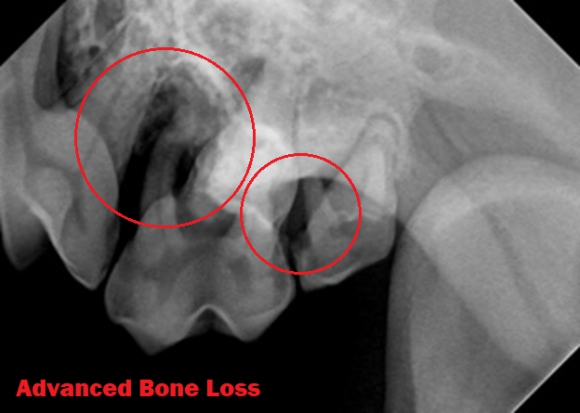


ASK US
Dental Radiography
Many patients that come to Packerland for a routine dental cleaning have additional oral problems. Full-mouth radiographs allow for better evaluation of the internal anatomy of the teeth, the teeth roots, and the alveolar bone that surrounds the roots. It is recommended that full-mouth, intra-oral radiographs be performed upon initial presentation to detect any abnormalities, and to provide a baseline for future comparison as the patient ages. In clinically "normal" mouths, as many as 28% of dogs and 42% of cats are found to have clinically important findings on dental radiographs. In clinically abnormal mouths, as many as 50% of dogs and 54% of cats will have additional clinical findings on radiographs. Patient management moving forward suggests that full-mouth radiographs should be repeated during further dental cleaning visits routinely, and as oral examination dictates. 
Dental radiographs allow for better evaluation of the health of the patient's teeth and surrounding supportive structures. The dental radiograph procedure is safe, quick, and painless. It can generally be accomplished in less than 10 minutes when performed by a trained technician. Approximately 60% of dental pathology is hidden below the gum line, making dental radiographs NECESSARY for the practice of good veterinary dentistry. Because of our ability to detect more problems with dental radiography, we do our best to prepare the patient’s family for the potential need for additional work. Estimates are always provided to the family for the recommended and expected work based upon patient pre-dental evaluation, then amended as needs change, and the family will be contacted with any updates to the plan and estimate during the procedure.
The following problems can be detected using dental radiography, and oftentimes are not seen upon visual examination:
• Tooth and root fractures
• Retained deciduous teeth
• Tooth root abscesses
• Areas where teeth appear to be missing, may reveal any of the following:
• Broken and retained roots
• Impacted teeth (teeth that did not erupt properly)
• Dentigerous cysts - Odontogenic cysts, associated with the enamel epithelium of an impacted tooth. May result in jaw fracture, especially in small breeds, if not detected early.
• Tooth viability
• Caries lesions
• Feline resorptive lesions, affecting the crown, roots or within the pulp chamber.
• Bone or soft tissue tumors
• Oral foreign bodies
The dental radiographs also aid in:
• Evaluation of mouth and jaw trauma for bone and teeth fractures
• Evaluation of periodontal disease:
• Height of the alveolar bone below the gum line in relation to the tooth
• Alveolar bone changes and degree of bone loss
• Size of the periodontal ligament space
• Presence or disappearance of the "lamina dura," the bone bundle attached to the periodontal ligament.
If you have any questions, please call us at 920-498-2808.



